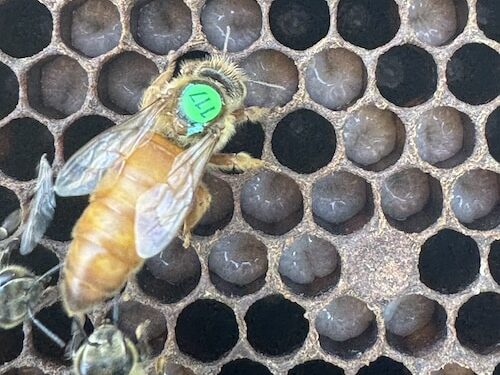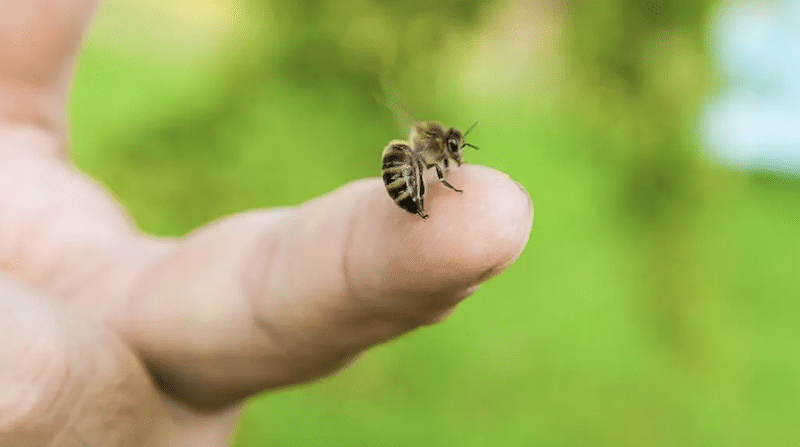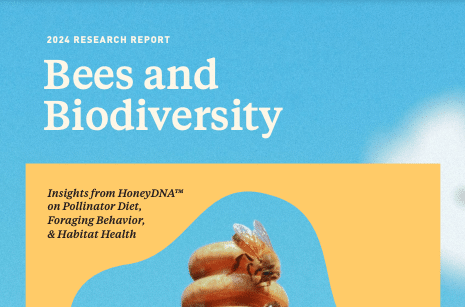*Updated August 27th, 2024*
Contents:
- How Queen Rearing Works
- The Best Bees Company’s Queen Rearing Program
- The Drone Challenge
- How are Other Beekeepers Around the World Rearing Queens?
- Queen Rearing for Cold Tolerance
- Breeding for Mite Resistance
- Genetic Engineering
- Survivor Breeding & Wild Stock Breeding
- FAQs
At The Best Bees Company, we’ve spent more than 10 years studying honey bees across a wide array of environments in America. Our research has led to a set of best practices that have improved bee health and increased colony survival. In spite of these efforts, we still lose more than 30% of our bee colonies each year, especially in northern environments, because of three factors: extreme cold, persistent mite infestation, and unpredictable queen strength.
We believe the solution to these problems is queen rearing — to breed stronger, more prolific queens that can pass on to their broods cold tolerance and mite resistance. While the beekeeping community has engaged in some experimental breeding, the scope of these efforts has been limited; no one has yet developed hardy queens that can reliably address all of these issues.
How Queen Rearing Works

The most common approach to queen rearing is known as grafting. Grafting is when the eggs from one of our hives with good genetics are put into (this part of the process is also referred to as grafting, to just make things a little more confusing!) their own queen cups on a specially designed frame. This frame is then put into a “cell raiser,” which is a frame in a queenless colony. The worker bees will automatically start the process of developing those eggs into queens to fill the power vacuum in their hive.
After 10 days, the larvae are almost ready to emerge from their queen cells as fully developed, virgin queen bees. As we know from our queen bee blog, a newly emerged queen will sting her competitors to death to assume the throne of the hive, so just before they emerge from their cells, we transport them in an incubator (to maintain optimal temperature and humidity levels) to the mating nucs in our research apiary. Each queen cell gets installed into her own mating nuc, which is another small queenless colony.
Meanwhile, back at the office, the next graft is underway, with a new batch of eggs entering the cell raiser. When we bring the next round of developing queens to the apiary, we first go to each of the mating nucs to catch the now-mated queens we installed from the previous graft. These queen bees are then either installed into our queen bank, used in client hives, or shipped to our other regions in need of new, healthy, and gentle queen bees!
The Best Bees Company’s Queen Rearing Program
YEAR ONE: 2021
As beekeepers and bee scientists with the largest bee database in North America, we’re joining this effort. We’re bringing our knowledge, people, and data to the work of breeding hardier queens. It’s the first step to cultivating colonies that can survive under the many different conditions found in cities, suburbs and rural areas across the nation.
Our beekeepers in California began our first queen rearing initiative in 2021. March is swarming time in California, and hives are full of larvae and nurse bees that can be separated out for use in raising queens. Our beekeepers will take “splits” from hives with high-performing queens whose colonies have shown encouraging resistance to varroa mites.
“This is one of the advantages we bring to queen rearing.,” said Nicole Voracka, Best Bees’ head beekeeper in the Bay Area at the time. “We have amazing data on our hives like brood size and consistency, mite resistance, honey production, and survival rates. This data will help us select larvae with the best genetic potential, raise our own crop of queens, and monitor the success of their hives.”
YEAR TWO: 2022
In 2022, our Staff Scientist at that time, Emily O’Neil, ran a queen rearing initiative in Ithaca, New York. There, larvae was selected from hives based on both mite resistance and survival rates, with the intention of developing colonies that can better survive cold winters in the northeast and fight off varroa mites with little treatment.
“As our data has shown again and again how varied bee health can be by geography,” said Noah Wilson-Rich, our founder and CEO, “we realized that the next phase in bee health optimization had to include queen rearing. If we use our hive data to select the best queen genetic material possible, we can develop hives that are uniquely adapted to the needs of different geographies.”
Despite our Ithaca apiary having a 100% overwintering survival rate, the queen rearing program was not successful. O’Neil’s efforts produced only one mated queen.
YEAR THREE: 2023

Our Boston Lead Beekeeper, Bridgette Whalen, took over the queen rearing initiative the next year. Starting April 28th, she (with the help of a couple other beekeepers) conducted nine grafts total; the last graft was on July 17th. The mating yard started out with 19 mating nucs, which increased to 27 by the end.
In total, Whalen grafted 556 eggs into the queen cups on the frame that goes into the cell raiser, and of those 556 eggs, 187 of them made it all the way through the process to become successfully mated queen bees. That is a roughly 34% success rate.
YEAR FOUR: 2024

For Whalen’s second year running the program, she wanted to see how early in the season we could start queen rearing and how late in the season we could finish it. She proposed an ambitious schedule with 5 more grafts than 2023. The first graft was conducted April 3rd, and the last graft will be conducted on September 20th. The research apiary started off with 24 mating nucs, increased to 56 at the beginning of June, and Bridgette had to add two more at the beginning of August.
In 2023, we produced an average of seven queen bees a day; in 2024, we produced an average of 13! We also increased our grafting success rate by 14.37% — from 33.63% to 48.08%.
In 2024, we sent 74 queen bees to nine regions compared to 45 queen bees to seven other regions in 2023. This brings us closer to our lofty, long-term goal of producing all our queen bees internally!
This year we were able to actually track the genetics of our queens, so we were able to more accurately determine which mated queens we found were actually ours. Last year, we assumed that every mated queen we found was the result of a graft. This increased accuracy will help us better track year over year progress.
For 2025, Whalen plans to introduce another mother colony into the queen rearing program, as we don’t want to bottleneck ourselves and hinder the genetic diversity. Of the three original mother colonies, we will replace the one that produced the most aggressive queens.
Additionally, Whalen wants to incorporate a genetic line that has hygienic behavior in 2025, versus this year, where all three of our genetic lines were selected for temperament. We also want to incorporate honey production. We’ll be tracking how these daughter queens that we reared this year do in creating colonies that produce a lot of honey, or we’ll start a new line in 2025 from a colony that has historically produced a lot of honey.
Finally, the last goal for next season is to get certified to fly a drone! This is so we can fly a camera tracking our queen bees on their mating flights to find out where they are going to mate with drones. Once we know that, we can better understand the risks involved in our queens’ mating flights, as well as monitor the genetic diversity of the drones our queens are mating with.
The Drone Challenge
If bees were like most domesticated animals, cross-breeding different strains for selective traits would be relatively easy. But bees, unlike cows, sheep, and pigs, are not easily contained during breeding. When it’s time for a queen to mate, she flies away from the hive and can mate with dozens of drones from different hives in what is called a “Drone Congregation Area”, each bringing a different set of genes. With uncontrolled breeding, the traits introduced by a new queen can be diluted over a few generations.
There are a number of solutions to this problem. Artificial insemination is the most effective method, but it can be risky (queens can be damaged in the process) and without the natural selection process where only the strongest drones mate with the queen, human-selected drones can accidentally pass on weaker genes. Queen rearing in isolated environments — islands, desert oases — can be effective for small-scale experiments, but impractical for large-scale breeding.
A third solution — breeding queens in an environment where a majority of hives are part of the breeding program — significantly reduces the chance of genetic dilution. As queens will fly as much as a mile further from the hive than will drones (a response designed to increase genetic diversity), to assure greater genetic control, it’s essential to surround the hive in a radius of a mile or more with hives with desired genetic stock.
How are Other Beekeepers Around the World Rearing Queens?

Some beekeepers around the world are working within their own stock, selecting the strongest queens from the healthiest hives, while others are cross-breeding bees from different strains to combine the most desirable characteristics. There are many different methods of queen rearing, and through experimentation, the beekeeping community can advance our collective understanding and increase our odds of success.
A BRIEF PRIMER ON HONEY BEE STRAINS
Honey bees, Apis mellifera, are native to Europe and Asia, but not to the western hemisphere. When the first European settlers came to North America, they brought with them the most common strain at the time, known today as German honey bees. Most wild honey bees in America are descendants of these German bees. By the mid-1800s these had become prone to disease, aggressive, and difficult for beekeepers to manage.
Italian strains were brought in to replace them, and proved for the next 100+ years to be perfect for U.S. agricultural purposes. They were good pollinators, docile and less likely to swarm (making them easy to manage), and produced an abundance of honey. They have only two drawbacks today: they’re not super cold tolerant and have little resistance to two virulent pests accidentally introduced here in the 1980s: tracheal mites and varroa mites.
While Italian honey bees are still the most popular, four other strains are used by breeders in the U.S. who are looking to create hardier bees:
- Russian honey bees: These bees were discovered in the far east of Russia and have proven resistant to both tracheal and varroa mites. Their primary drawback — they maintain active queen cells throughout the season, making it hard for beekeepers to tell if they’re about to swarm.
- Buckfast honey bees: Bred by a monk at Buckfast Abbey in England, these bees are more mite-resistant than Italian bees, but can also be more aggressive.
- Carniolan honey bees: These come from the alpine region of Italy, Austria, and Slovenia, and are characterized by greater cold tolerance. They’re prodigious foragers in the spring and can create so much honey by early summer that their hives can’t keep up with the supply, increasing the chance of swarming. They don’t like extreme heat.
- Caucasian honey bees. This strain originated in the Caucasus Mountains between Asia Minor and southern Russia. Their extra-long tongues make them great pollinators. They’re more cold tolerant than Italian bees, but can be slow to build up hives in the spring.
Queen Rearing for Cold Tolerance
Members of the Northern Bee Network, an alliance of beekeepers in northern states, are working to breed queens that can survive the sub-zero temperatures that are common where they keep bees. With so many queen rearing operations based in the American South, they feel that the queens they’ve purchased in the past are not acclimated to the extremes of cold in places like Michigan. To combat this, they’re breeding their own, using only queens that have survived cold local winters in Michigan.
Researchers at Washington State University are taking a different approach — they’re working with US raised Carniolan queens, already known for greater cold tolerance, and breeding them with semen from pure Carniolan drones found in the Alps of Slovenia, in the hopes of creating an even more cold-resistant strain that will adapt well to conditions here.
Breeding for Mite Resistance
With varroa mite infestation one of the leading causes of colony loss, beekeepers around the world are focusing much of their efforts on breeding mite-resistant queens. Researchers at the USDA Honey Bee Research Lab in Baton Rouge have been working on the problem for several decades. Their focus: find and breed bees whose grooming behavior would rid them of most varroa mites.
Initial results were promising but worked only with young mites. A breakthrough came when a strain of honey bee was discovered near Vladivostok in the far east of Russia. These Russian bees had been exposed to Varroa mites for centuries and had, through natural selection, developed a grooming technique that was highly effective in killing young and mature mites: they bite the legs off mites, who then quickly bleed to death.
Russian bees, acclimated to severe winters, are also more cold tolerant. While very promising, Russian bees have some drawbacks for beekeepers — their queen rearing behavior makes it harder to tell if they are near to swarming. Cross-breeding Russian with Italian bees to build a super bee is the next challenge for beekeepers.
Genetic Engineering
Some scientists believe the only way to achieve consistent results in queen rearing is through genetic engineering. At the University of Dusseldorf in Germany, scientists have been working to develop techniques for inserting desired genes into honey bees. They’ve faced a host of challenges — genes didn’t take, the insertion process damaged embryos, and nurse bees killed the modified eggs.
Over time, they’ve slowly overcome all of these, and believe they have a process that will work. The hard work of developing genetically modified bees that exhibit all of the desired traits will take years, and when complete, could face resistance in countries, such as Germany, that have strict laws about transgenic organisms.
Survivor Breeding & Wild Stock Breeding
Our colleagues at Wildflower Meadows are taking a completely natural tack for their queen rearing initiative. They’re rearing queens from hives that have consistently survived, without treatment for varroa mites. They believe this natural approach will build up qualities of mite resistance and maintain all of the positive traits of Italian honey bees.
At the Honey Company, they’re taking this approach one step further. In a program they call The Feral Bee Project, they mate their virgin queens with drones from feral hives, in the hopes that these drones, from hives that have survived in the wild for generations without human intervention, will produce hardier, more disease-resistant colonies. The project is relatively young but shows promise.
Our friends at They Keep Bees are doing much the same thing — cross-breeding wild and domesticated bees to build stronger, healthier stock. In describing their queen rearing efforts, their founder, Amir Jones said, “These hives are biodiverse and adaptive to localized bioregions and they can help move the industry forward, ensuring that the bees are equipped with the characteristics that safeguard their survival because bees are more than a tool.”
FAQs
Q: What is queen rearing?
A: Queen rearing is selectively breeding queen bees to cultivate certain desirable traits, such as gentleness, cold tolerance, mite resistance, and more.
Q: How does queen rearing work?
A: There are different methods of queen rearing, but the one we use at Best Bees is called grafting. Grafting is when we take the eggs from hives that display our goal traits and develop them into queen bees.
Q: When did Best Bees start queen rearing?
A: We started our first year of queen rearing in 2021 in California.






